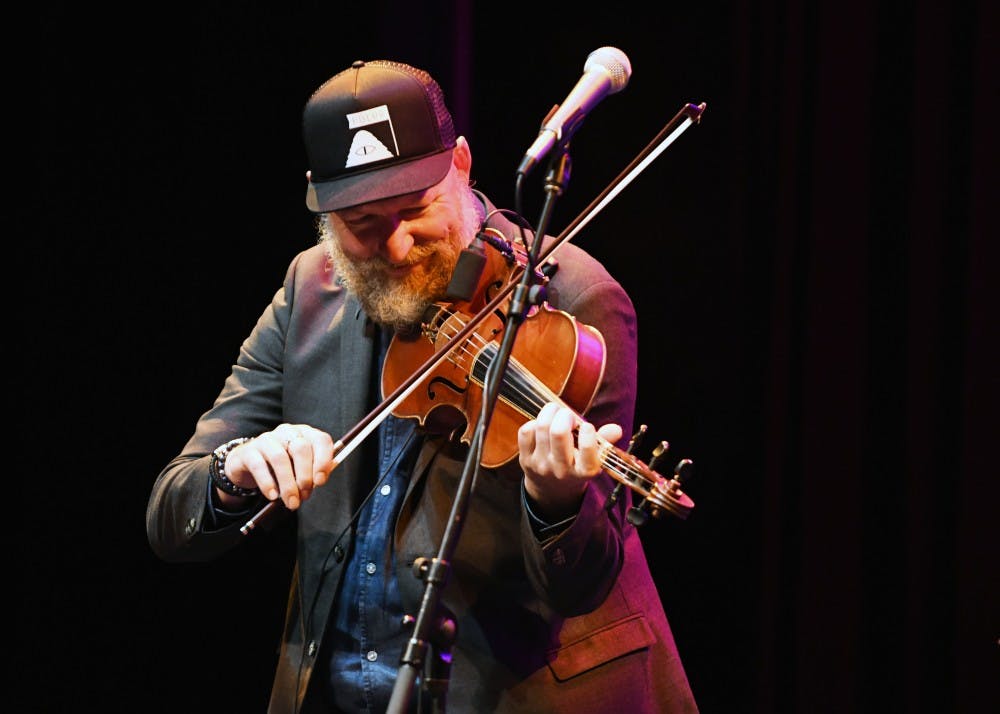So here's a thing from Fiddle Tunes.
There's a famous (as these things go) Swedish folk band called Väsen (pronounced, for those of you getting any funny ideas from German, "Vessen," with an "e" roughly like that in "mess"). The fiddler, Mikael Marin, plays I always assumed was a large 5-string violin, which it sort of is, except he's a violist and it's a 5-string viola. This is a little confusing in that a 5-string viola has the viola strings (C-G-D-A) with the high E from a violin; a 5-string violin has the violin strings (G-D-A-E) with the low C from a viola. You wouldn't be playing world-class viola or violin repertoire on either one: even if there weren't compromises in the sound (relative to the classical norms), you'd be hard-pressed to get the classical music world to take you seriously. They're mostly applied to folk traditions, like bluegrass. Or Swedish folk music.
Marin's instrument is visually striking just from a distance, because the fingerboard and tailpiece have a light-colored border:
It's hard to overstate how rare this is, except to say that to an untrained eye (including mine) every violin or viola looks exactly like every other violin or viola, going back centuries. And it's not like people haven't experimented, but they repeatedly come back to the classics: witness this shop selling no less than four copies (probably more) of Guarneri del Gesù's Il Cannone violin. Which was made in 1743! The modern guitar is a kaleidoscope of designs, and didn't even exist until the 1800s.
The fingerboard in particular has remained a sacrosanct black for a long time now, typically ebony, glued onto a neck made of maple. Some original baroque violins had inlays on the fingerboard, and of course Norway's Hardanger fiddle is off getting high on its own supply. The online consensus about fingerboard inlay seems to be that
- Over enough time and environment changes, the surface can become uneven as the inlay shrinks or expands at a different rate than the fingerboard.
- It makes a weird violin and you'll probably have trouble selling it.
Marin's viola was made by a famous Swedish luthier, Per Klinga (who died last year), and is clearly of the "I am going to play this until I die and I don't care who has to deal with it after that" class. I just assumed Marin had asked for it as a feature (and his wife Mia has a matching 5-string violin).
Except...Anna Lindblad, who was teaching at Fiddle Tunes with her bandmates, has one too! It seems pretty common on Klinga's instruments.
I got to see it up close when I went to ask her about it after class, and it's beautiful. I couldn't see everything the maker did, but the light-colored outline around the fingerboard is this stunning curly maple, all striped and finished to play with the light hitting it.
As it happens, Per Klinga's instruments are famous in and around Sweden and its music, and if anyone wanted to sell one, it would probably take all of a week before someone took them up on it. The old advice goes to buy an instrument that makes you want to pick it up and play; I couldn't pick it up, but I really, really wanted to play it.




